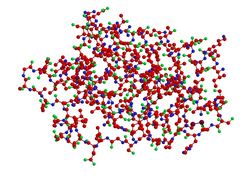Immunopeptidome revealed
Most cells in the body display fragments of proteins (including pathogen-derived proteins) on their surface through MHC class I molecules. These peptides are collectively referred to as the immunopeptidome and their presentation to immune cells shapes immunity. Additionally, a role is emerging for the immunopeptidome in autoimmunity and cancer immunosurveillance. However, our understanding of the molecular composition and biogenesis of the immunopeptidome in health and disease is poor. Seeking to address this, scientists on the EU-funded IMMUNOPEPTIDOMICS (Global immunopeptidome landscape of normal and Mycobacterium tuberculosis-infected human cells) project developed a mass spectrometry high-throughput workflow to quantitatively measure peptides presented by MHC/HLA molecules. In particular, they focused on measuring the immunopeptidome with a high level of reproducibility and quantitative accuracy using SWATH mass spectrometry. Project members generated peptide libraries consisting of consensus fragment ion spectra, and analysed them to produce quantitative digital maps of MHC immunopeptidomes. Their work extended to cancer cells where they identified mutated peptides associated with MHC class I molecules. In another part of the project, scientists determined the immunopeptidome of human cells infected by the life-threatening pathogen Mycobacterium tuberculosis (Mtb), the causative agent of tuberculosis (TB). Given the continuous threat of TB, there is an urgent need for new and more efficient vaccines. The identification of Mtb peptides bound to MHC I molecules could serve as vaccine candidates against TB. Furthermore, scientists integrated their findings with proteomics, epigenetics and transcriptomics data in the quest for TB biomarkers. The results of IMMUNOPEPTIDOMICS facilitated the launch of the human immuno-peptidome project (HIPP) as part of the Human Proteome Project (B/D-HPP). The immunopeptidome data is freely available online(opens in new window). The HIPP initiative is described on the website of the Human Proteome Organization(opens in new window). Overall, the IMMUNOPEPTIDOMICS mass spectrometry platform has the potential to accelerate the development of next-generation immune-based therapies. Partners envision that prompt implementation of the method will enable more successful vaccine design against a number of diseases.







